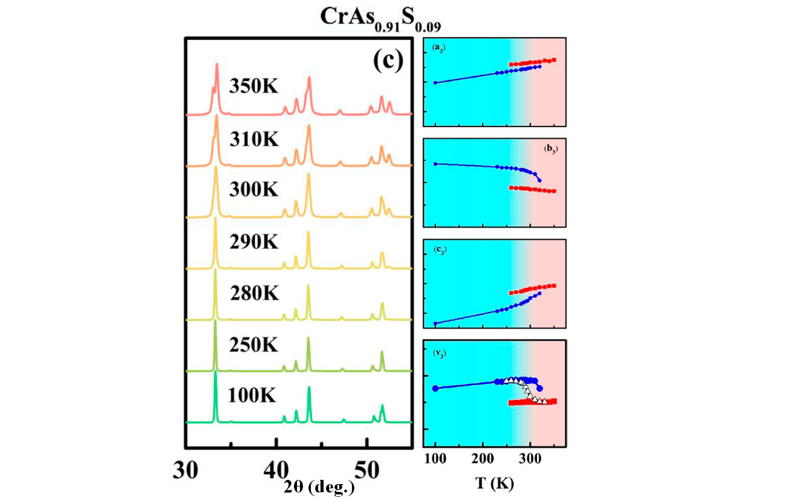Oct 16,2024|By
Researchers found giant negative thermal expansion in antiferromagnetic CrAs-based compounds, using variable temperature X-ray diffractometer (XRD) of Steady High Magnetic Field Facility (SHMFF) at High Magnetic Field Laboratory, Chinese Academy of Sciences.
As we known, most materials expand upon heating and contract upon cooling. However, negative thermal expansion (NTE) materials do not, which contract upon heating rather than expand.
NTE materials have attracted more and more attention due to their wide applications in printed circuit boards, machinery parts, optical fiber reflective grating devices, and high-precision optical mirrors.
In general, the materials with good NTE performance should have a large linear NTE coefficient, high thermal conductivity to avoid the thermal stress, and insensitivity to magnetism, electricity and photon.
Recently, pressure-induced superconductivity was observed in CrAs, which undergoes an antiferromagnetic (AFM) transition around the N el temperature (TN) of about 260 K. Moreover, an abrupt and giant volume contraction also occurs in CrAs around TN.
However, the narrow working temperature window and not covering room temperature limit its industrial applications to a large extent.
The researchers from Nanjing University investigated the NTE properties by doping a small amount of Ni or S in a CrAs compound, which can increase TN and broad temperature window by chemical modification.
With the help of XRD of SHMFF, they were able to precisely detect the variation of lattice constant in CrAs-based compounds.
Through their study, a giant NTE could be realized in Cr0.98Ni0.02As, CrAs, and CrAs0.91S0.09 with a broad temperature window of 218 K from 122 to 340 K.
On the other hand, the CrAs-based compounds showed large thermal and electrical conductivitiesand their dimensions were insensitive to the external magnetic field. The aforementioned excellent properties suggested that the CrAs-based compounds could serve as an alternative type of NTE materials and havepromising applications, especially in the magnetic field environment.
This work was published in Physical Review Applied of the American Physical Society.
 |
|
X-ray diffraction spectrum under different temperatures and temperature-dependent of lattice constant for CrAs 0.91S0.09 compound (Image by the research team) |
Attachments Download: